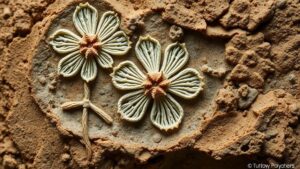Investigating hidden gold veins in Papua New Guinea’s uncharted river valleys.
Investigating Hidden Gold Veins in Papua New Guinea’s Uncharted River Valleys
Papua New Guinea (PNG) is recognized as a treasure trove for geologists and mineral collectors, especially due to its rich geological features including volcanic activity and diverse mineral deposits. Among these, hidden gold veins in uncharted river valleys present an enticing opportunity for rockhounds seeking to uncover natures hidden wealth. This article delves into the methods of exploring these areas, the geology behind gold formation, and practical tips for aspiring treasure hunters.
The Geology of Papua New Guinea
Gold in Papua New Guinea is primarily associated with epithermal deposits, which form under specific volcanic and hydrothermal conditions. Geological surveys indicate that some of the most productive regions are found within or near the countrys numerous river valleys, where erosion has revealed veins of precious minerals.
According to the U.S. Geological Survey (USGS), PNG is home to approximately 70 million ounces of gold, with most of the deposits concentrated in the mountainous areas and river valleys. Key geological formations include:
- Volcanic Arcs: The island’s active tectonics create ideal conditions for gold vein formation.
- Alluvial Deposits: Over time, erosion can expose gold nuggets, making river valleys prime exploration sites.
- Fault Zones: Areas of seismic activity often channel mineral-rich fluids that precipitate gold.
Identifying Potential Gold Sites
When investigating possible hidden gold veins, several geological indicators should be considered:
- Alteration Zones: Look for changes in mineral composition in rocks, as alteration can signal that gold-bearing fluids have passed through.
- Presence of Quartz Veins: Gold often occurs within quartz, so identifying quartz-rich areas could lead to potential finds.
- Stream Bed Sampling: Testing soil and sediment in riverbeds can yield indications of upstream gold deposits.
One effective method is panning for gold in riverbeds, which can help locate alluvial deposits. In some cases, concentrations of gold flakes can guide collectors toward the specific locations of parent veins.
Understanding the Environmental Considerations
Engaging in mineral exploration, especially in fragile ecosystems such as those found in Papua New Guinea, comes with responsibilities. Its crucial to conduct investigations with minimal environmental impact. Guidelines include:
- Respect Local Regulations: Always adhere to local mining laws and land rights.
- Engage with Local Communities: Collaboration can lead to shared knowledge and sustainable practices.
- Minimize Disturbance: Use hand tools responsibly to limit disruption to the environment.
Various communities in Papua New Guinea have intricate relationships with their local ecosystems. Understanding these dynamics enhances the prospect for sustainable and respectful exploration.
Safety and Preparedness
Exploring uncharted river valleys can present inherent risks. Proper preparation and equipment are paramount:
- Essential Gear: Bring durable footwear, gloves, and weather-appropriate clothing.
- Navigation Tools: Equip yourself with GPS devices and maps to avoid getting lost in remote areas.
- First Aid Kit: Always have a comprehensive first aid kit in case of accidents.
Understanding the terrain and potential hazards can significantly improve the chances of a safe and fruitful expedition.
Real-World Applications and Encouraging Participation
Numerous enthusiasts and professional prospectors embark on expeditions to PNG, often resulting in significant discoveries. For example, the discovery of gold in the Porgera Valley has been a game changer, turning the area into one of the largest gold mining sites globally. Such successes not only motivate individuals but also encourage scientific research and conservation efforts in the area.
Prospecting groups and clubs often organize trips to Papua New Guinea, allowing individuals to share expenses and knowledge. Engaging in these communities can provide both camaraderie and essential support during explorations.
Conclusion
Exploring uncharted river valleys in Papua New Guinea for hidden gold veins poses an exciting challenge for rockhounds and mineral collectors alike. Through understanding the local geology, employing safe and responsible practices, and engaging with local communities, individuals can embark on meaningful adventures that contribute to the broader knowledge of geology and the preservation of rich ecosystems. With patience, preparedness, and respect for the environment, the hidden treasures of Papua New Guinea await discovery.
Remember, the journey of exploration is as valuable as the treasures found along the way. Happy prospecting!



